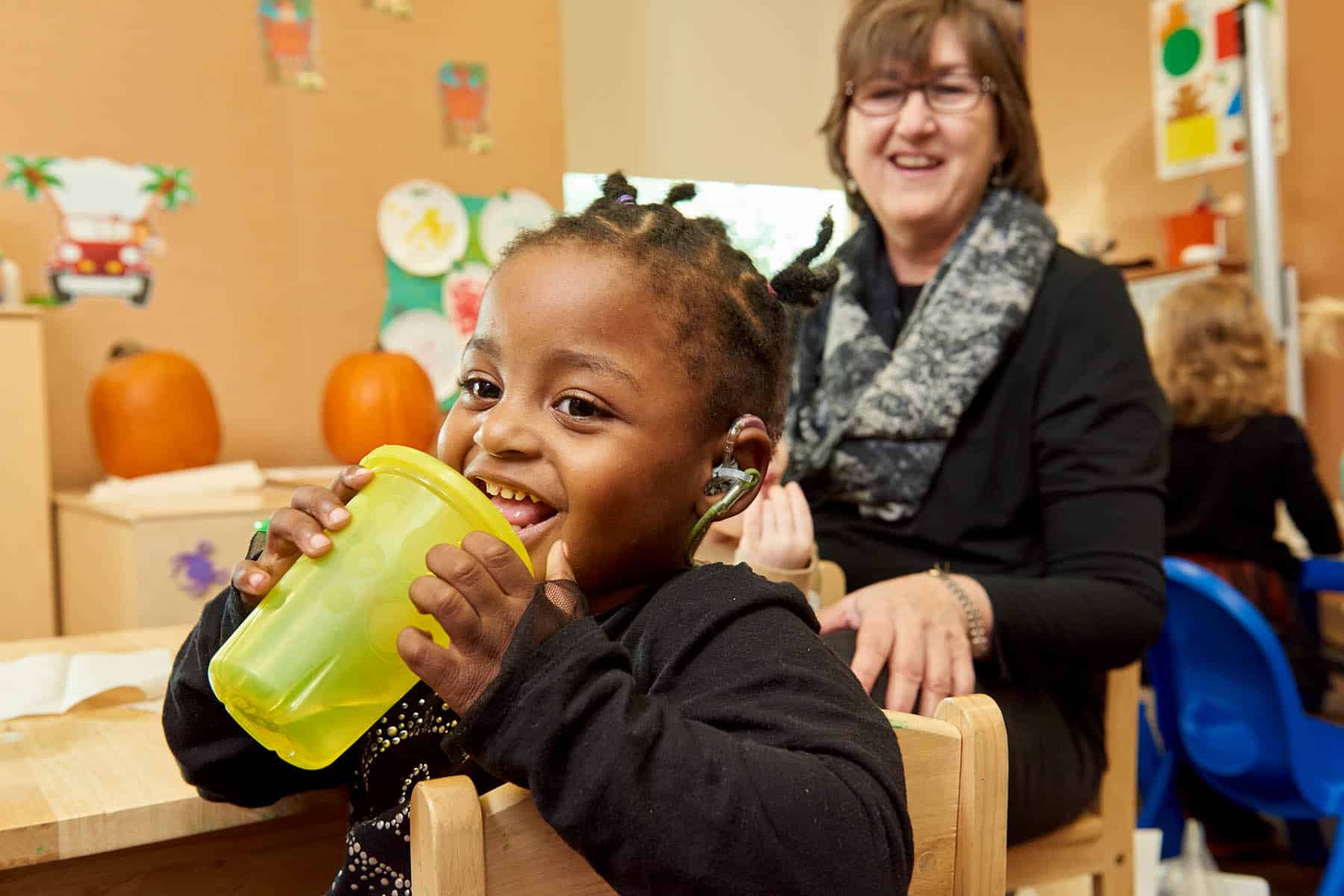With all the recent and rapid changes in the world right now, parents and caregivers may find themselves with extra quality time at home and looking for ways to meaningfully fill their days. Academics, reading, arts and crafts are important and fun for children – did you know listening at home can be fun, too?
Here are a few simple ideas for incorporating listening practices into a child’s day as well as tips for caring for hearing devices at home.
Fit Listening into Your Routines
Incorporating opportunities to practice listening doesn’t have to require anything extra. Listening can be targeted during your everyday activities and routines. Think about mealtimes, morning routines and activities during which we can be specific about listening.
Make Listening Fun
Play is the work of childhood! Listening activities shouldn’t be static or rote. Use your creativity to incorporate listening into your child’s favorite activity or something novel and fun. Have siblings at home too? The game Musical Chairs lets us practice listening for when sound begins and ends while listening to our favorite music. Freeze Dance practices the same skill – dance away while the music is playing and freeze when the music stops. Simon Says is another great game for practicing listening and following simple directions. Let your creativity flow and remember, listening practice can be fun!
Use Your Resources
If you have access to your child’s teacher or parent educator, ask for ideas for listening exercises at home. Professional resources like Early Listening at Home or SPICE include guides for activities that target a variety of listening skills. Other existing programs like Baby Beats, The Listening Room, or Angel Sound provide excellent auditory training opportunities for every level of listening experience. Programs are available online or for download and can be used by anyone, regardless of what kind of device your child uses.
Put on Your Audiologist Hat
As always, parents are their child’s first advocate and that remains true during uncertain times. You are on the front line! Use tools like the Ling 6 check and your stethoset, listening rod or listening set to ensure your child’s device is working appropriately. Have an older child? Begin to include them in this process, expose them to the vocabulary and language surrounding device care, and set them up to be an excellent self-advocate. Have questions? See if any of CID’s Quick Tip videos can help or reach out to your audiologist for guidance.
Organize Your Supplies
If you’re like most of us, things pile up and get moved to the back of closets and drawers leaving us to rummage through them when we need something. What a great time to add this task to the to-do list and go through the cabinet, closet, drawer, or bag where your device supplies are kept. This is a wonderful opportunity to refresh yourself on the purpose of each supply. Need a reminder? Check out your hearing care cards or see our free downloads to support hearing aids, bone conduction aids and cochlear implants.
Even in times of great change, listening practice can be incorporated into fun activities if we all keep calm and listen on!

Brittany Wuebbles is the Director of Pediatric Audiologist in the Martha E. Jones Pediatric Audiology Center at CID – Central Institute for the Deaf. She joined the CID Audiology staff in May 2016 after graduating with her doctoral degree from Washington University School of Medicine in St. Louis. Ms. Wuebbles currently serves children ages birth through 13. Her clinical interests include cochlear implants, amplification and optimizing performance outcomes.












